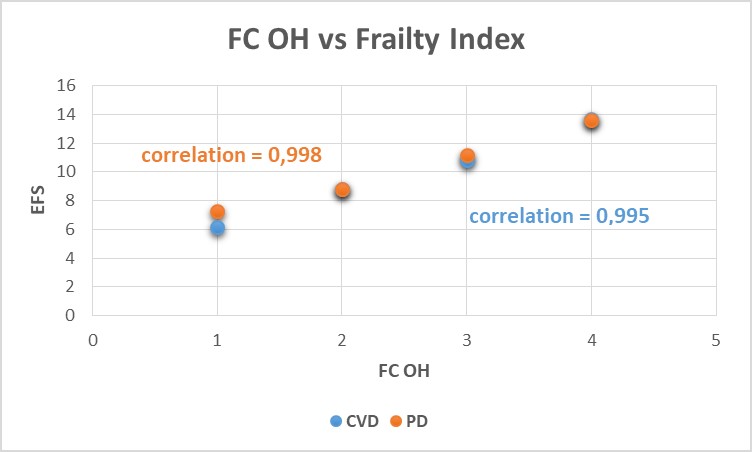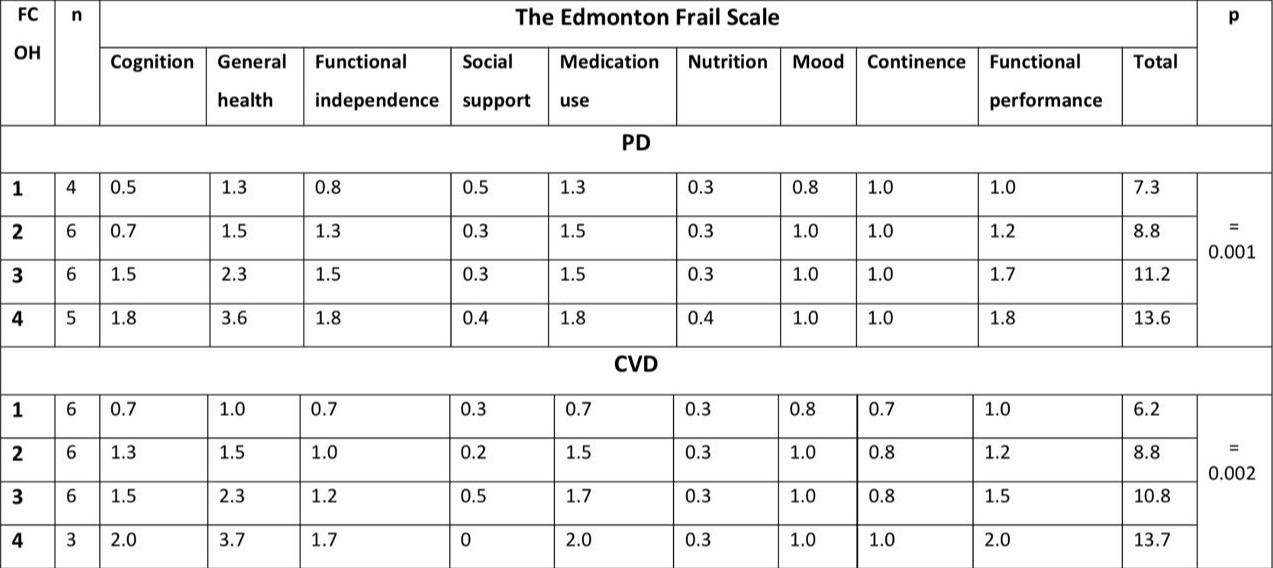Category: Parkinson's Disease: Non-Motor Symptoms
Objective: to investigate the relationship between functional class of orthostatic hypotension (FC OH) and frailty index (FI).
Background: frailty syndrome (FS) as well as orthostatic hypotension (OH) results from failures of several physiological systems, which can lead to dramatic changes in health and falls. The main causes of OH are age, neurodegenerative and cerebrovascular diseases, which are similar to the causes of FS [1], [2]. Therefore, detection of OH in patients with FS provides an opportunity to predict life-threatening conditions.
Method: we saw 21 patients with Parkinson disease (PD) and 21 with cerebrovascular disease (CVD) (small vessel disease or chronic phase of ischemic stroke). We hypothesized a relationship between FI and FC OH.
Results: there was a strong correlation between FC OH and FI [figure1]. The higher FC OH, the worse FI. FC OH 1 was accord to vulnerable; FC OH 2 – mild frailty; FC OH 3 – moderate frailty and FC OH 4 – severe frailty [tabel1].
Conclusion: OH and FS are closely related and should be assessed together. We recommend orthostatic test for all patients with FS. Future studies need to focus on the inclusion of OH in the FS criteria.
References: 1. Joseph, A., Wanono, R., Flamant, M., & Vidal-Petiot, E. (2017). Orthostatic hypotension: a review. Nephrologie & therapeutique, 13, S55-S67.
2. Clegg, A., & Young, J. (2011). The frailty syndrome. Clinical medicine, 11(1), 72.
To cite this abstract in AMA style:
A. Ovchynnykova, E. Trufanov. Orthostatic hypotension and frailty [abstract]. Mov Disord. 2023; 38 (suppl 1). https://www.mdsabstracts.org/abstract/orthostatic-hypotension-and-frailty/. Accessed December 21, 2025.« Back to 2023 International Congress
MDS Abstracts - https://www.mdsabstracts.org/abstract/orthostatic-hypotension-and-frailty/


